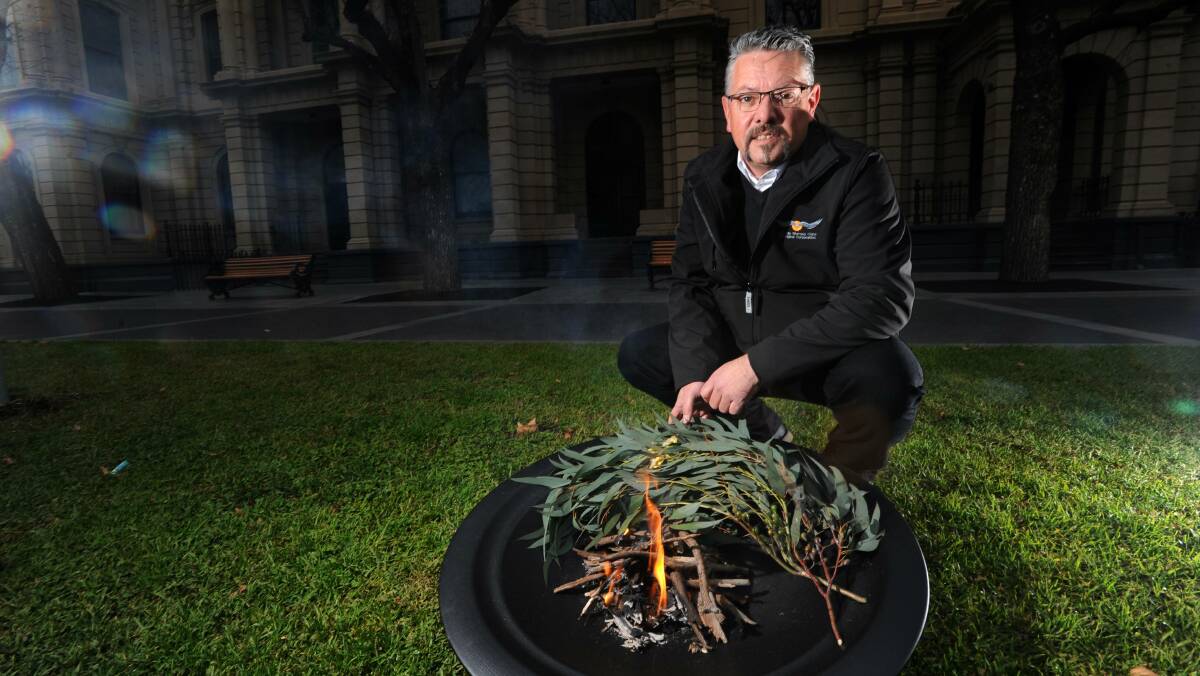
Ashes turn to ashes, and dust turns to dust.
Subscribe now for unlimited access.
$0/
(min cost $0)
or signup to continue reading
But few of us would see the remains of a person as simple specks of carbon.
The vestiges of an earthly body hold a deep symbolic power.
So imagine knowing your ancestors had been dug up, taken from their country, and were being kept in boxes on museum shelves?
It’s almost impossible, but for many Dja Dja Wurrung people that’s the case.
Many early European settlers dug up grave goods and human remains under the guise of scientific curiosity.
Where do the dead lie?
From a western mindset it might seem natural to group graves together. Cemeteries are the clusters we huddle in so as to not be alone in death.
They’re bulwarks that protect us from being swallowed up by the vast country.
But that’s not the case in every culture.
The graves of many of central Victoria’s first people are scattered through the country.
Dja Dja Wurrung Corporation chief executive Rodney Carter said before European people came traditional owners of the land had been buried in the places they often visited.
“To also put somebody that you love in an area that you normally frequent a lot, reinforces your association, your connection, your life history,” Mr Carter said.
Chair Trent Nelson said the Dja Dja Wurrung Corporation still comes across ancestral remains throughout its country.
In central Victoria with its rocky granite soils burials often took place in the low areas close to the river system, or where there was softer sandy soil. People were also cremated.
It’s different to the north west of Victoria, where burials are scattered trough the landscape, Mr Nelson said.
In the north of Dja Dja Wurrung country there is even evidence of a tree burial of a baby.
Those who had died would also be buried with personal goods, such as a cloak.
It’s not an easy process but it’s a process that we have to do to right the wrongs. Otherwise these ancestral remains will just sit in boxes on shelves and their spirits will be always lost.
- Trent Nelson
The grave site might also be marked by a temporary shelter or spears.
Burials might go for a few days, and see surrounding people come together to pay respect.
The burial place would then be avoided in living memory as a form of reverence or respect to the person who had died, Mr Carter said.
As the markings degraded, and became rubble, people would be free to reoccupy this place.
Dja Dja Wurrung burials before European contact were isolated, but the mass deaths that were common in the nineteenth century meant those who died were treated differently, Mr Carter said.
“With contact and introduced diseases, massacres and things like that, you get a different treatment of people in terms of being deceased,” Mr Carter said.
“You get a greater number of people buried in a place like that.”
Fighting for repatriation
When early European settlers came Indigenous graves were often dug up. The remains and grave goods found were then sold to museums, and taken overseas.
The Dja Dja Wurrung Corporation has fought to have ancestral remains and other artifacts returned to country.
Mr Nelson sees the repatriation and burial process as one of healing, and righting past wrongs.
For him, burying the remains of ancestors back on country lets their spirit rest.
The remains are a tangible trace of the intangible spirit.
“It’s about bringing people back on country and back on their rightful birthplace and trying to let their soul and their spirit rest,” Mr Nelson said.
“We understand that the remains are a tangible object that we repatriate the spirit is what we want.”
Between 1984 and 2017, 1094 ancestral remains were repatriated from Museums Victoria to communities in Victoria.
As recently as last year Beechworth’s Burke Museum returned a collection of Dja Dja Wurrung objects that had been taken.
The Victorian Aboriginal Heritage Council oversees much of the research behind repatriating ancestral remains.
In the last six years, Mr Nelson has officiated at as many as 10 repatriations.
To repatriate remains members of the Dja Dja Wurrung will will sit down with the family known to have a connection with that ancestor.
Rest on country
To “heal that spirit” members of the Dja Dja Wurrung Corporation perform a ceremony on country.
Repatriation is a process of high emotion, but also a healing one.
“At least we’ve got them old people back on country and they’re back on their rightful birthplace, they’re not sitting in a box in a museum,” Mr Nelson said.
“It’s a very tiring process, but in a way it’s an enjoyable one for me because I feel like I’m righting the wrongs.”
For Mr Nelson repatriation closes a link. It’s an important part of respecting ancestors, not leaving them behind.
It’s a fight he wants to see future generations take on.
“It’s important that our people are laid to rest on country. We’ll always fight to have our people brought on country and laid to rest,” Mr Nelson said.
“It’s not an easy process but it’s a process that we have to do to right the wrongs. Otherwise these ancestral remains will just sit in boxes on shelves and their spirits will be always lost.”
Have you signed up to the Bendigo Advertiser's daily newsletter and breaking news emails? You can register below and make sure you are up to date with everything that's happening in central Victoria.


